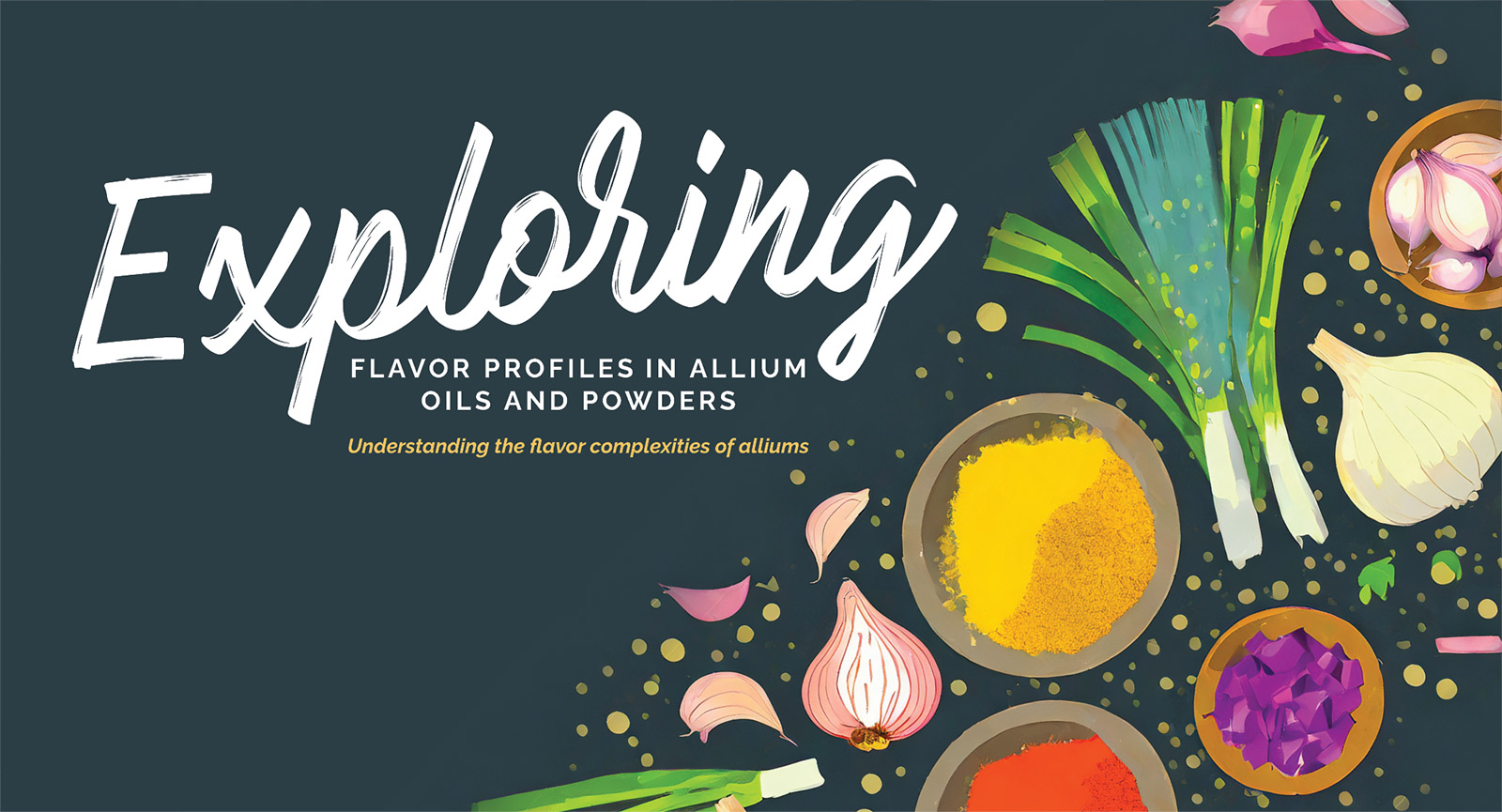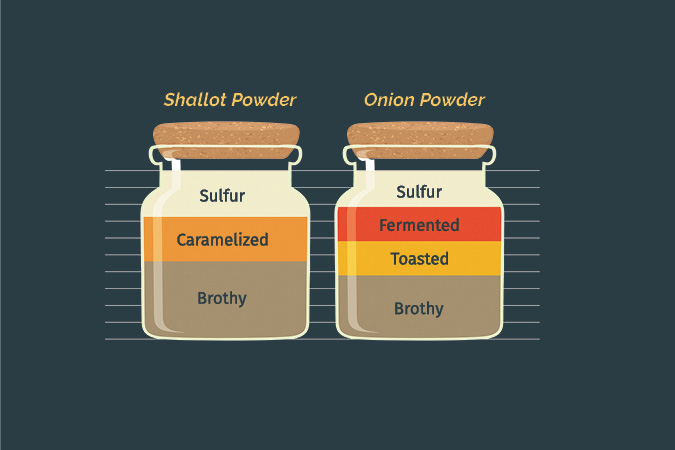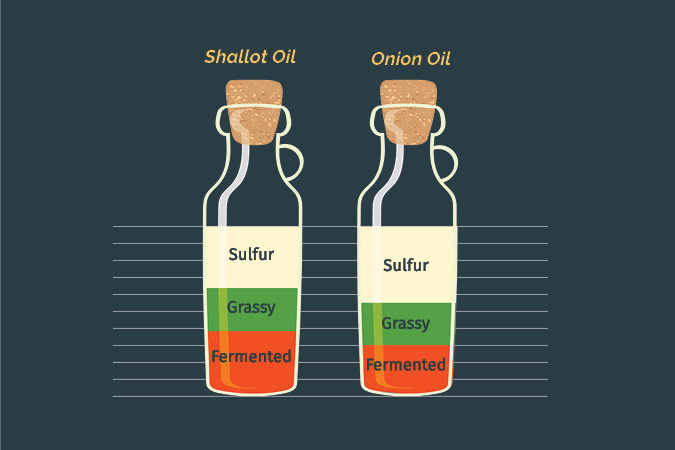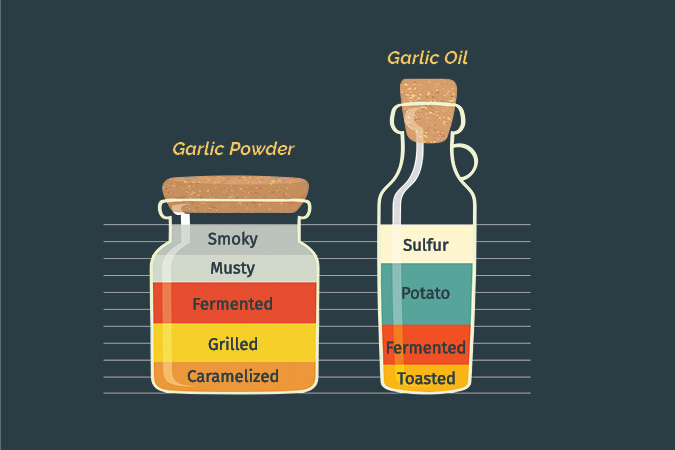
Understanding the flavor complexities of allium oils versus allium powders
The basic building blocks for cuisines around the world, allium flavor profiles are distinct yet flexible. Within the kingdom of plants, alliums are a genus of flowering plants with somewhere between 250 to possibly over 900 different species, but the most common varieties used in the kitchen are onions, shallots, leeks, and garlic. Their applications are as varied as the differing species, as they can be used in different forms: fresh, dehydrated, fried, roasted, IQF… the options are vast.
Fresh Alliums: The Vibrant Start
Fresh alliums, like chives, are often used as vibrant, aromatic toppings that add a burst of flavor and freshness to a wide range of dishes. Chopped fresh chives on a baked potato or a creamy soup can elevate the taste and presentation of your meal. Fresh garlic, known for its intense and pungent flavor, shines in dishes like pesto, aioli, or salsa. It’s a go-to choice for those who adore the bold, untouched taste of garlic in their creations.
Dehydrated Powders: The Classic Selection
Allium powders, on the other hand, offer a concentrated flavor profile with a hint of caramelization and toasting. Shallot powder, with its caramelized notes, adds a touch of sophistication to sauces and rubs, while onion powder’s fermented and toasted notes make it a versatile choice for soups, stews, and processed foods. These powders, derived from dried alliums, are excellent when you need a consistent, intense flavor in your dishes.
Allium Oils: A Great Choice for Flavor and Stability
Allium oils and extracts serve as an ideal substitute for fresh and dehydrated forms. They are microbiologically stable, easy to use, and easy to store. When it comes to flavor, allium oils maintain the fresh, green-grassy notes of raw shallots and onions. This makes them a great fit for applications like salad dressings and dips, where a vibrant, crisp flavor is desired
But how do the flavor profiles differ from powders? To better understand, we compared the aroma profiles of several species in the allium family: onion, shallot, garlic, and leek within cultivar (for example, leek oil to leek powder). We also wanted to understand, quantitatively, how onions and shallots compared to each other considering they both belong to the same species, A. cepa, (while garlic, leek, and chives are their own distinct species of alliums)
Shallots & Onions
The powdered form of these alliums, which are the most often used in culinary applications, have both sulfur and brothy notes. Shallot powder has more caramelized notes, while onion powder has more fermented and toasted notes

In oil form, onions and shallots were more similar, both having sulfur, grassy, and fermented notes. The shallot oil was a little more fermented while the onion was a bit more sulfury.

The difference can be explained in how powdered and oil forms are produced. Oils use raw shallots and onions, lending to the fresh, green-grassy notes, perfect for applications like salad dressing and dips. Powders are produced using dried products, giving them a more brothy, caramelized and toasted profile, which may be better suited for processed applications, like soups.

Leek & Garlic
Leek and garlic also showed differences between the powder and oil forms. Leek powder is musty, grassy, and hay-like, while the oil, produced from fresh leeks, is more complex with additional sulfur, potato, beany, and fermented notes. Fresh leeks are rather flexible, often used in soups, stews, and other dishes with long cooking times. Their mild flavor, however, makes them a great alternative in uncooked dishes as well.
While garlic powder and oil both have fermented notes, the similarity ends there. Unlike other powders, garlic has more complexity, with smoky, musty, grilled, and caramelized notes. In oil form, more toasted, sulfury, and potato-like notes are detected—think of the pesto, aioli, and salsa mentioned above.

Because alliums can be so flexible in preparation—fresh, fried, roasted, or otherwise—exploring the flavor profiles of oils vs. powders provides insight on flavor notes are expressed when different forms are used. While we may be bias in our selection (extracts for the win every time!) this sensory knowledge is very beneficial for chefs and product developers as they can use this insight to determine which species, variety, or form is most appropriate for the finished food application, giving each distinct dish the perfect punch of allium.
Learn more about the benefits of using extracts over fresh or dried spices and herbs from one of our lead scientists.